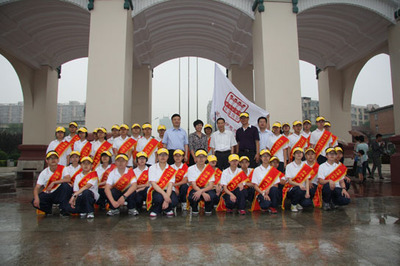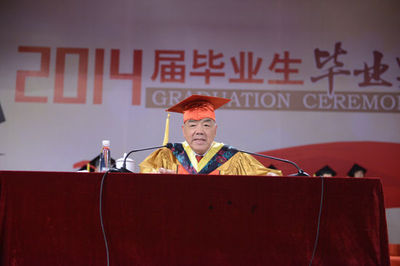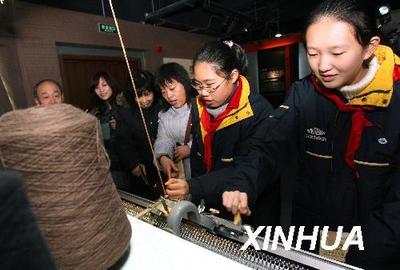
这是从美国国防部(DoD)官网上找到的美国防长帕内塔在几天前于新加坡闭幕的2012香格里拉对话上的演讲,现转载于此,原文链接:http://www.defense.gov/speeches/speech.aspx?speechid=1681。
这篇演讲被认为十分重要,原因在于帕内塔在演讲中较为完整地阐述了美国亚太战略的内容。实际上美国许多负责外交和安全事务的高级官员都在不同场合多次阐述了美国战略调整和亚太战略的内容,包括奥巴马和希拉里,而且每次这种阐述的内容和格式都差不多,即先是背景,然后谈与盟国关系,然后花很大篇幅谈与中国关系,然后谈具体如何操作(即政策实施)。此次帕内塔阐述的是美国在亚太的军事战略,与之前希拉里等外交上的阐述不同,而且由于是军事方面的阐述,所以更吸引眼球,也引来了国内外很多学者和媒体的各种解读。总的来说,我将此篇演讲的主要内容总结如下:
1、阐述美国亚太战略调整的背景:从中东和中亚脱身、国防经费的缩减、亚太地区重要性的与日俱增等;
2、详细介绍美国亚太战略(重返亚太)的四项原则:
A、遵守国际规则与秩序(abideby international rules and orders);
B、强调盟友与伙伴关系的重要性(Partnerships);
C、美国在亚太的存在(Presence):强调“再平衡”(rebalancing)美国在亚太的力量关注格局,要重视东南亚和印度洋,重点谈及与中国关系
a、希望、乐见中国的繁荣与成功
b、对台湾问题的观点
c、对中菲黄岩岛争端的立场
D、力量投送(ForceProjection):即具体的军力部署调整
a、将在太平洋和大西洋的舰队部署对比由长期的50/50改为60/40,更多投放到太平洋上(这是最被中国媒体所热议和批评的内容)
b、将“海空一体战”等由概念转化为现实,如在五角大楼设立专门的办公室来进行这些战术的实战研究和设计
c、聚焦高精尖技术领域
总之,个人感觉帕内塔的这篇演讲总体内容和大致格式与往昔多位美国官员关于美国亚太战略调整的表述没有太大不同之处,但在具体的内容环节上有新东西,因此还是很值得仔细研究的。此外,还感觉美国对于中国的定位是一方面希望中国“繁荣与成功”,另一方面又在很多具体问题上针对中国,而且众多美国高级别官员多次反复地公开表态都是这样,其信息公开和透明程度已经可以了,但是我们说,关键的是要看它做什么而不是说什么。总体上感觉美国对中国还是在采取一种“软遏制”,即仍旧希望将中国纳入其主导的一系列体系和规则系统中去,从而达到“温水煮青蛙”的效果,但并不希望中国崩溃或政权垮台,它要遏制的是中国的某种“野心”(我们称之为“雄心”),而不是在具体的行为中与中国发生冲突、把中国顶回去这种“硬遏制”,认为只要让中国抛弃哪怕“温和的亚洲门罗主义”的抱负,就能一劳永逸地确保美国在亚太和全球的领导地位。而中国的崛起和发展必然是要求在亚洲地区尤其是亚太地区有自己的“责任范围”(一种关于“势力范围”的温和的外交说法)的,所以这就与美国的上述战略想法产生冲突。中美之间应该在如何在亚太和亚洲地区确立相互间的地缘战略底线和“责任范围”界限上加强协商、妥协和交流,由此产生相应的战略互信,构筑起中美在太平洋世纪的双重战略保证和双边关系的切实进步。
Shangri-LaSecurity DialogueAs Deliveredby Secretary of Defense Leon E. Panetta, Shangri-La Hotel,Singapore, Saturday, June 02, 2012Ladies andgentlemen, it is an honor to have the opportunity to attend myfirst Shangri-La Conference. I want to commendthe International Institute for Strategic Studies for fosteringthis very important dialogue, this very important discussion thatis taking place here this weekend.
Iam, as I understand it, the third United States secretary ofdefense to appear at this forum, across administrations from bothpolitical parties in the United States. That is,I believe, a testament to the importance that the United Statesplaces in this dynamic and critical region of theworld.
Itis in that spirit that I have come to Singapore, at the beginningof an eight-day journey across Asia that will take me to Vietnamand to India as well.
Thepurpose of this trip, and of my remarks today, is to explain a newdefense strategy that the United States has put in place and whythe United States will play a deeper and more enduring partnershiprole in advancing the security and prosperity of the Asia-Pacificregion, and how the United States military supports that goal byrebalancing towards thisregion.
Since the UnitedStates grew westward in the 19th century, we have been a Pacificnation. I was born and raised in a coastal townin California called Monterey, and have spent a lifetime lookingout across the Pacific Ocean. As a fishingcommunity, as a port, the ocean was the lifeblood of oureconomy. And some of my earliest memories as achild during World War II are of watching American troops passthrough my community, trained at the military reservation calledFort Ord, and were on their way to face battle in thePacific.
Iremember the fear that gripped our community during World War II,and later when war again broke out on the KoreanPeninsula. Despite the geographic distance thatseparates us, I’ve always understood that America’s fate isinexorably linked with thisregion.
Thisreality has guided more than six decades of U.S. military presenceand partnership in this region -- a defense posture which, alongwith our trading relations, along with our diplomatic ties, alongwith our foreign assistance, helped usher in an unprecedented eraof security and prosperity in the latter half of the 20thcentury.
Inthis century, the 21st century, the United States recognizes thatour prosperity and our security depends even more on theAsia-Pacific region. After all, this region ishome to some of the world’s fastest growing economies: China,India, and Indonesia to mention a few. At thesame time, Asia-Pacific contains the world’s largest populations,and the world’s largest militaries. Defensespending in Asia is projected by this institute, the IISS, tosurpass that of Europe this year, and there is no doubt that itwill continue to increase in thefuture.
Given thesetrends, President Obama has stated the United States will play alarger role in this region over the decades tocome. This effort will draw on the strengths ofthe entire United States government. We take onthis role not as a distant power, but as part of the Pacific familyof nations. Our goal is to work closely with allof the nations of this region to confront common challenges and topromote peace, prosperity, and security for all nations in theAsia-Pacific region.
Mycolleague and my good friend Secretary of State Hillary Clinton hasalso outlined our refocus on the Asia-Pacific, emphasizing thecrucial part that diplomacy, trade, and development will play inour engagement.
Thesame is true for defense policy. We will play anessential role in promoting strong partnerships that strengthen thecapabilities of the Pacific nations to defend and securethemselves. All of the U.S. military services arefocused on implementing the president’s guidance to make theAsia-Pacific a top priority. Before I detailthese specific efforts, let me provide some context for our broaderdefense strategy in the 21st century.
TheUnited States is at a strategic turning point after a decade ofwar. We have significantly weakened al-Qaida’sleadership and ability to attack other nations.We have sent a very clear message that nobody attacks the UnitedStates and gets away with it. Our militarymission in Iraq has ended and established -- established an Iraqthat can secure and governitself.
InAfghanistan, where a number of Asia-Pacific nations are playing acritical role in the international coalition, we have begun ourtransition to the Afghan security lead and to an Afghanistan thatcan secure and govern itself. Recent meeting inChicago, NATO and its partners -- over 50 nations -- came togetherto support General Allen’s plan to accomplish thisgoal. In addition to that, we joined in asuccessful NATO effort to return Libya to the Libyanpeople.
Buteven as we have been able to draw these wars to a hopeful end, weare confronted today by a wide range of complex globalchallenges. From terrorism -- terrorism stillremains a threat to the world -- from terrorism to thedestabilizing behavior of Iran and North Korea, from nuclearproliferation to the new threat of cyberattack, from continuingturmoil in the Middle East to territorial disputes in thisregion.
Atthe same time, the United States, like many other nations, isdealing with large debt and large deficits, which has required theDepartment of Defense to reduce the planning budget by nearly halfa trillion dollars or specifically $487 billion that were directedto be reduced by the Congress in the Budget Control Act over thenext decade.
Butthis new fiscal reality, challenge that many nations confront thesedays, has given us an opportunity to design a new defense strategyfor the 21st century that both confronts the threats that we faceand maintains the strongest military in theworld.
Thisstrategy makes clear the United States military, yes, it will besmaller, it will be leaner, but it will be agile and flexible,quickly deployable, and will employ cutting-edge technology in thefuture. It makes equally clear that while theU.S. military will remain a global force for security andstability, we will of necessity rebalance towards the Asia-Pacificregion. We will also maintain our presencethroughout the world. We will do it withinnovative rotational deployments that emphasize creation of newpartnerships and new alliances. We will alsoinvest, invest in cyber, invest in space, invest in unnamedsystems, invest in special forces operations. Wewill invest in the newest technology and we will invest in theability to mobilize quickly ifnecessary.
Wehave made choices and we have set priorities, and we have rightlychosen to make this region apriority.
Ourapproach to achieving the long-term goal in the Asia-Pacific is tostay firmly committed to a basic set of shared principles --principles that promote international rules and order to advancepeace and security in the region, deepening and broadening ourbilateral and multilateral partnerships, enhancing and adapting theU.S. military’s enduring presence in this region, and to make newinvestments in the capabilities needed to project power and operatein Asia-Pacific.Let me discuss each of theseshared principles. The first is the sharedprinciple that we abide by international rules andorder.
Letme underscore that this is not a new principle, our solidcommitment to establish a set of rules that all play by is one thatwe believe will help support peace and prosperity in thisregion.
Whatare we talking about? These rules include theprinciple of open and free commerce, a just international orderthat emphasizes rights and responsibilities of all nations and afidelity to the rule of law; open access by all to their shareddomains of sea, air, space, and cyberspace; and resolving disputeswithout coercion or the use of force.
Backing thisvision involves resolving disputes as quickly as possible withdiplomatic efforts. Backing these principles hasbeen the essential mission of the United States military in theAsia-Pacific for more than 60 years and it will be even a moreimportant mission in the future. My hope is thatin line with these rules and international order that is necessarythat the United States will join over 160 other nations inratifying the Law of Seas Convention thisyear.
Thesecond principle is one of partnerships. Key tothis approach is our effort to modernize and strengthen ouralliances and partnerships in this region. TheUnited States has key treaty alliances with Japan, South Korea,Australia, Philippines and Thailand. We have keypartners in India, Singapore, Indonesia, and othernations. And we are working hard to develop andbuild stronger relations with China.
Aswe expand our partnerships, as we strengthen our alliances, theUnited States-Japan alliance will remain one of the cornerstonesfor regional security and prosperity in the 21stcentury. For that reason, our two militaries areenhancing their ability to train and operate together, andcooperating closely in areas such as maritime security andintelligence, surveillance and reconnaissance. Weare also jointly developing high-tech capabilities, including thenext generation missile defense interceptor, and exploring newareas of cooperation in space and incyberspace.
Inthe past several months we have strengthened the alliance and ourbroader strategic objectives in the region with a revised plan torelocate Marines from Okinawa to Guam. This planwill make the U.S. presence in Okinawa more politicallysustainable, and it will help further develop Guam as a strategichub for the United States military in the Western Pacific,improving our ability to respond to a wide range of contingenciesin the Asia-Pacificregion.
Another linchpinof our Asia-Pacific security is the U.S. alliance with the Republicof Korea. During a year of transition andprovocation on the Korean Peninsula, this alliance has beenindispensable, and I have made it a priority to strengthen it forthe future. To that end, even as the UnitedStates reduces the overall size of its ground forces in the comingyears in a transitional way over a five-year period, we willmaintain the United States Army’s significant presence inKorea.
Weare also boosting our intelligence and information sharing with theRepublic of Korea, standing firm against hostile provocations fromNorth Korea while transforming the alliance with new capabilitiesto meet globalchallenges.
Thethird shared principle is presence. Whilestrengthening our traditional alliances in Northeast Asia andmaintaining our presence there, as part of this rebalancing effortwe are also enhancing our presence in Southeast Asia and in theIndian Ocean region.
Acritical component of that effort is the agreement announced lastfall for a rotational Marine Corps presence and aircraftdeployments in northernAustr
 爱华网
爱华网


